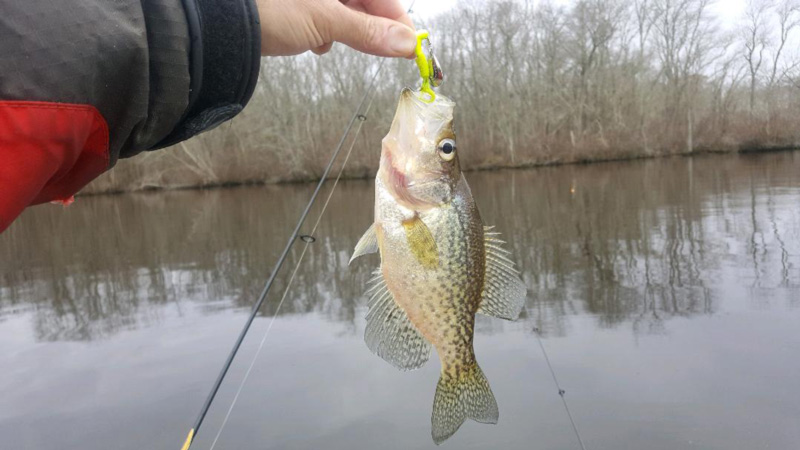As long as the fresher headwaters of tidal creeks and tributaries doesn’t freeze solid, a mixed bag of crappie, perch, pickerel, and bass awaits. One under-utilized method of prospecting for winter panfish is trolling. But in order for it to be effective you have to think on the micro-level. Micro-level lures, that is.
- Choose two- to three-inch lures, which have some action on their own as they move through the water. Twister tails, paddle tails, Roadrunners, and lures that similarly swim on their own will all do the trick. This is a tactic where tubes and straight tails, however, usually just won’t have enough action.
- Use ultralight gear with six-pound braid, to maximize sensitivity. For perch and crappie a trace leader of four- or six-pound mono is all you need, but if pickerel are in the area, going to eight-pound mono will result in fewer bite-offs.
- Use heads of a mere 1/16th of an ounce.
- Troll so incredibly slow that you can detect and bounce bottom, even with this tiny bit of weight. (Note: this will only work down to 12 or 15 feet).
- Work channel edges and drop-offs. Areas where four or five feet of water drops down to 10 or more feet are ideal.

Micro-trolling like this will allow you to work your way up or down a creek until you locate some fish. Crappie and perch move around a lot less in the winter months than they do when the water’s warm, so once you do locate a school, you’ll often be able to stop trolling and shift to either vertical jigging or casting and retrieving. Then you can really bang on ‘em. When you wear the school out or they do decide to move, get back on the troll to locate another bunch.